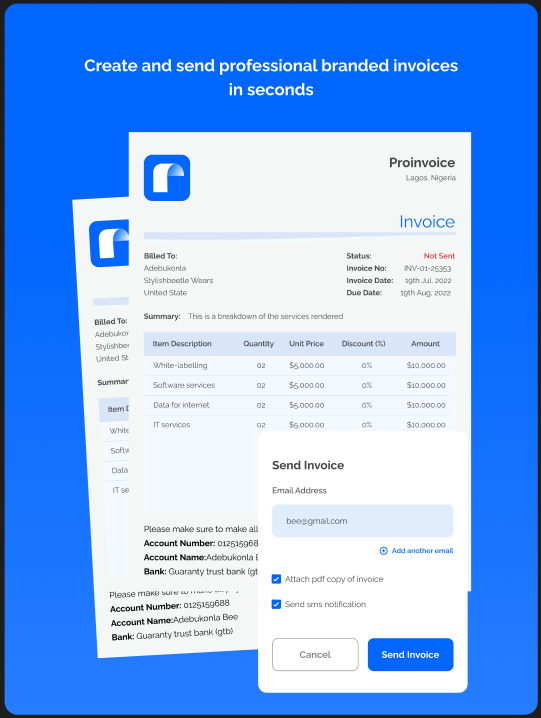Once your business begins to grow, it is imperative that as an entrepreneur, you start looking at how to reduce overhead costs.
In the challenging landscape of small business ownership, managing overhead costs is a key factor in achieving profitability and sustainability.
Whether you’re a startup or an established small business, understanding how to reduce overhead costs can significantly impact your bottom line.
In this comprehensive guide, we will explore practical strategies and tips to help you trim expenses, ensuring that your business operates efficiently and remains financially resilient.
Understanding How To Reduce Overhead Costs
Before delving into cost-cutting strategies, it’s crucial to identify and understand your overhead costs.
Overhead costs encompass various ongoing expenses that are not directly tied to producing a specific product or service.
These include rent, utilities, salaries, insurance, and office supplies. Knowing your specific overhead costs is the first step toward effective cost reduction.
Conducting a Comprehensive Overhead Analysis
Regular Financial Audits
Regularly conduct financial audits to gain insights into your business’s financial health. This involves thoroughly reviewing your income statements, balance sheets, and cash flow statements.
Identify areas where you’re overspending and opportunities for optimization. Make it a routine to perform these audits quarterly or annually to stay ahead of potential financial challenges.
Categorizing Overhead Costs
Categorize your overhead costs to better understand where the majority of your expenses lie. This categorization can include fixed costs (e.g., rent, salaries) and variable costs (e.g., utilities, office supplies).
Understanding the nature of your expenses allows for a more targeted approach to cost reduction.
Streamlining Operational Efficiency
Embracing Technology
Investing in technology can streamline your operations and reduce certain overhead costs.
Utilize project management software, communication tools, and accounting software to automate tasks and improve overall efficiency.
This not only saves time but also minimizes the need for additional staff or resources.
Remote Work Opportunities
Consider implementing remote work options for your team. This reduces the need for a physical office space, lowering costs associated with rent, utilities, and office supplies.
Embracing remote work can also enhance employee satisfaction and productivity.
Negotiating with Suppliers
Building Strong Supplier Relationships
Cultivate strong relationships with your suppliers. Building rapport can provide opportunities for negotiation on prices, terms, and discounts.
Explore bulk purchase options or consider consolidating your suppliers to leverage better deals. Open and transparent communication with suppliers can lead to mutually beneficial agreements.
Regularly Reviewing Supplier Contracts
Periodically review your supplier contracts to identify potential cost-saving opportunities.
Negotiate better terms, explore discounts for early payments, or consider alternative suppliers that offer competitive pricing.
Regularly assessing your supplier relationships ensures you are getting the best value for your money.
Energy Efficiency and Sustainability
Energy-Saving Initiatives
Implement energy-saving initiatives within your workspace. This can include using energy-efficient appliances, installing programmable thermostats, and optimizing lighting.
Small adjustments can lead to significant reductions in utility bills, positively impacting your overhead costs.
Sustainable Practices
Explore sustainable practices that not only benefit the environment but also contribute to cost reduction.
For example, embracing paperless operations can reduce office supply expenses, and recycling initiatives can lead to waste management cost savings.
Staffing Optimization
Cross-Training Employees
Cross-train your employees to handle multiple responsibilities. This not only enhances their skill set but also allows for flexibility in staffing.
During peak times, employees can seamlessly switch between tasks, reducing the need for overtime or additional staff.
Performance-Based Incentives
Consider implementing performance-based incentives for your staff.
Rewarding employees for exceptional performance can boost morale and productivity, creating a positive impact on your bottom line.
This approach aligns employee incentives with the overall success of the business.
Managing Office Space Costs
Downsizing or Subleasing
Evaluate your current office space needs. If you find that you’re utilizing only a fraction of your existing space, consider downsizing or subleasing unused areas.
This can result in substantial savings on rent, utilities, and maintenance.
Shared Workspaces
Explore shared workspaces or co-working options. These provide a cost-effective alternative to traditional office spaces, offering flexible arrangements that cater to your business’s specific needs.
Shared workspaces often include amenities such as utilities and office equipment, reducing additional costs.
Overhead Cost Reduction as a Continuous Process
Establishing a Cost-Conscious Culture
Foster a culture of cost consciousness within your organization.
Educate your team about the importance of overhead cost reduction and encourage them to contribute ideas for improvement.
A collective effort can lead to innovative solutions and sustained financial health.
Regularly Reviewing and Adjusting
Overhead cost reduction is not a one-time effort; it requires ongoing commitment and regular review.
Set aside time periodically to reassess your overhead costs, identify areas for improvement, and adjust your strategies accordingly.
This proactive approach ensures that your business remains adaptable in the face of changing circumstances.
Conclusion
Successfully reducing overhead costs is a strategic endeavor that requires a combination of financial analysis, operational optimization, and a commitment to ongoing improvement.
By understanding your overhead costs, streamlining operational efficiency especially by using an invoice generator for small business, negotiating with suppliers, implementing energy-efficient practices, optimizing staffing, and managing office space costs, you can create a leaner, more resilient small business.
Remember, the key is not just to cut costs arbitrarily but to do so intelligently, ensuring that the quality of your products or services is maintained or enhanced.
Embrace a culture of cost consciousness, and view overhead cost reduction as a continuous process that contributes to the long-term success of your small business.













